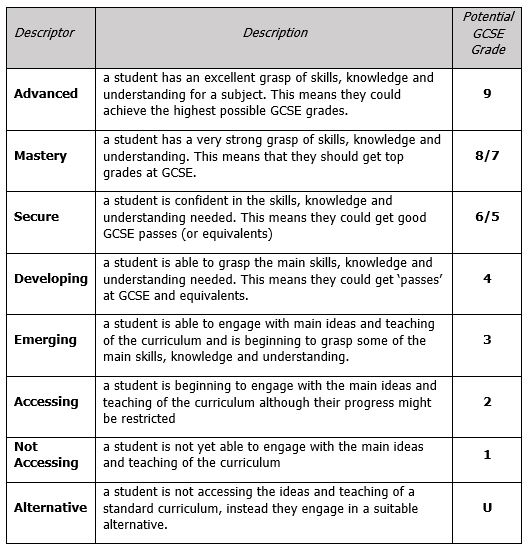The key features of our assessment cycle are:
- Students are assessed regularly in class, using the formative assessment approaches outlined in our assessment strategy, giving regular feedback to help students know where they are and what they need to do next to continue to develop their learning.
- In the primary phase, assessments are tracked and analysed each half term using Sonar Tracker. Pupils are regularly assessed in Reading, Writing, GPS and numeracy, with half-termly assessments across areas of the wider curriculum. Parents are given feedback, at least termly, on how their child is performing against age-related expectations. This is reported as Working Towards (WT), or Working At (WA) age-related expectations. In some subjects, namely Literacy and Numeracy, a child may also be working to Greater Depth (GD), exceeding age-related expectations.
- In the secondary phase, students are given minimum expected targets at the beginning of Year 7, based on their prior attainment at KS2. These targets are minimum targets and we work with students to help them first reach and then exceed them.
- Summative assessment in years 7 – 9 is based on six progression thresholds
- In the secondary phase, there are three assessment points in the year, where students sit more formal assessments and where their progress is reported to parents Students in Y7-10 will have an End of Year exam, assessing key knowledge that they have been taught to date on their course.
- Summative assessment in years 10 – 11 is based on exam board grading criteria.

